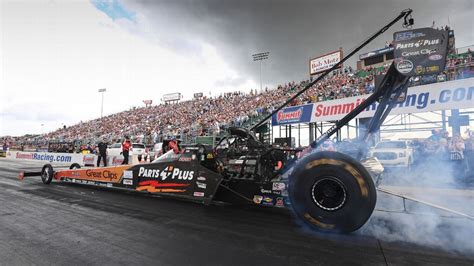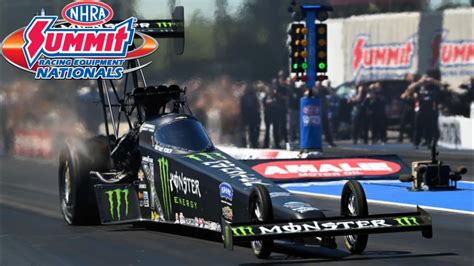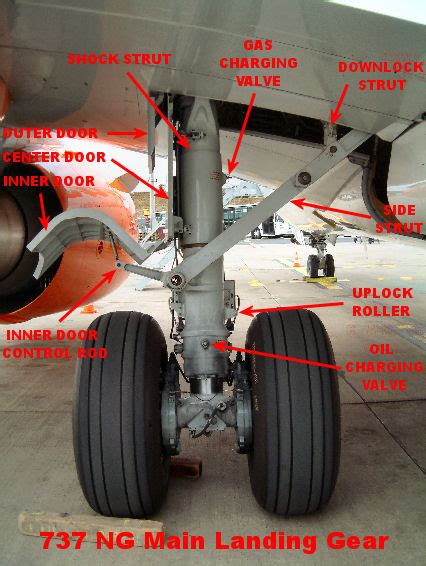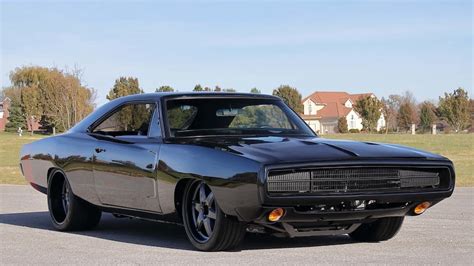
Tony Stewart’s Top Fuel dragster suffered a massive engine explosion during the first round of qualifying at the Summit Racing Equipment NHRA Nationals in Norwalk, Ohio, on Friday. The incident, which occurred just after Stewart launched his car, resulted in significant damage, but the three-time NASCAR Cup Series champion emerged unharmed.
The incident occurred as Stewart accelerated off the starting line, sending flames erupting from underneath the body of his Mobil 1-sponsored dragster. The force of the explosion ripped the car apart, leaving a trail of debris in its wake. Stewart, in his rookie season in Top Fuel, managed to bring the severely damaged car to a stop.
“Yeah, I’m fine,” Stewart said after the incident, as quoted by NHRA. “It just came unglued there at the hit.”
Following the explosion, Stewart’s team immediately assessed the damage. While Stewart was uninjured, the extent of the damage to the dragster cast doubt on whether they would be able to repair the car in time for the remaining qualifying sessions and race day. The team, led by crew chiefs Neal Strausbaugh and Mike Domagala, faced a race against the clock to determine the feasibility of repairs or the necessity of withdrawing from the event.
The explosion marked a dramatic turn of events for Stewart, who has been steadily gaining experience in Top Fuel after transitioning from a highly successful career in stock car racing. He has consistently expressed enthusiasm for the challenges of drag racing and has been working diligently to improve his performance. Prior to the explosion, Stewart had been showing promising signs of progress, making the incident a significant setback in his rookie season.
The Norwalk event is a crucial stop on the NHRA Mission Foods Drag Racing Series schedule. The race attracts top drivers and teams from across the country, all vying for valuable championship points and coveted Wally trophies. The atmospheric conditions at Norwalk often provide favorable conditions for record-breaking performances, adding to the event’s prestige and competitiveness. The explosion that occurred with Stewart’s dragster was not the only one during the qualifying session.
The NHRA Safety Safari, a dedicated team of emergency responders and track specialists, quickly attended to the scene following Stewart’s explosion. They ensured the track was clear of debris and safe for subsequent runs. Their prompt and efficient response is a standard feature at NHRA events, underscoring the organization’s commitment to safety.
This incident served as a stark reminder of the inherent risks involved in motorsports, even with the stringent safety measures in place. Top Fuel dragsters are among the fastest accelerating vehicles on earth, capable of reaching speeds of over 330 miles per hour in a mere 1,000 feet. The immense power and forces involved place tremendous stress on the engines and components, making mechanical failures a constant possibility.
Stewart’s transition to Top Fuel racing follows a legendary career in NASCAR and other forms of motorsports. His accolades include three NASCAR Cup Series championships (2002, 2005, and 2011), an IndyCar Series championship (1997), and a Brickyard 400 victory (2007). He retired from full-time NASCAR competition in 2016 but has remained active in various racing ventures, including team ownership and participation in other racing series.
His move to Top Fuel marked a new chapter in his illustrious career, driven by a passion for the sport and a desire to test his skills in a different discipline. Stewart has openly acknowledged the steep learning curve involved in transitioning to drag racing, but he has embraced the challenge with characteristic determination and enthusiasm.
The racing community is closely following the aftermath of the explosion and awaiting updates on the status of Stewart’s team and their plans for the remainder of the Norwalk event. The incident has undoubtedly added an element of drama and uncertainty to the competition, highlighting the unpredictable nature of motorsports.
The accident involving Tony Stewart’s Top Fuel car during qualifying at the NHRA Nationals in Norwalk underscores the volatile and high-stakes nature of Top Fuel drag racing. Top Fuel dragsters represent the pinnacle of straight-line speed and acceleration, machines that push the boundaries of engineering and human capability. The Norwalk incident serves as a vivid reminder of these risks, even with stringent safety measures.
In Top Fuel racing, engines generate approximately 11,000 horsepower, more than eight times the power of a modern Formula 1 car. These engines burn a mixture of nitromethane and methanol, creating enormous energy output. The immense power needed to propel the cars to such incredible speeds puts immense strain on every component.
The engines are designed to withstand these forces, but even the smallest imperfection or deviation from the design parameters can lead to catastrophic failure. The explosion that Stewart experienced is a testament to the potential for these failures, which can result in complete engine disintegration.
Modern Top Fuel cars have numerous safety features designed to protect the driver in such events. These features include a robust roll cage constructed from high-strength steel, a fire suppression system that automatically activates in the event of a fire, and a five-point harness system that securely holds the driver in place. Drivers also wear fire-resistant suits, gloves, and helmets to provide additional protection. These safety measures significantly reduce the risk of serious injury in the event of an accident.
The NHRA has a long history of implementing safety improvements in response to accidents and incidents. The organization continually evaluates its safety regulations and procedures to identify areas for improvement. This commitment to safety has made drag racing safer over the years, but the inherent risks remain.
The Norwalk incident is sure to trigger renewed discussions about safety in Top Fuel racing. Teams and the NHRA will likely examine the causes of the explosion to determine if there are any steps that can be taken to prevent similar incidents in the future. The sport’s constant evolution includes safety enhancements, and this event will serve as a catalyst for further improvements.
Tony Stewart’s transition to Top Fuel drag racing has been highly anticipated by fans of both NASCAR and NHRA. His popularity and accomplishments in stock car racing have brought new attention to drag racing, and his participation has been widely welcomed by the drag racing community.
Stewart’s decision to compete in Top Fuel was motivated by a lifelong passion for drag racing. He has expressed admiration for the skill and bravery of Top Fuel drivers, and he has embraced the challenge of learning a new discipline. His transition has not been easy, as he has had to adapt to the unique demands of driving a Top Fuel car. However, he has shown steady progress, and his performance has been improving with each race.
The Norwalk incident represents a setback for Stewart, but it is unlikely to deter him from pursuing his goals in Top Fuel racing. He is known for his resilience and determination, and he is expected to bounce back from this setback. His team will undoubtedly work diligently to repair or replace his car, and he will continue to gain experience and improve his performance.
The Summit Racing Equipment NHRA Nationals in Norwalk is one of the most popular events on the NHRA schedule. The event attracts a large crowd of enthusiastic fans, and the atmosphere is always electric. The Norwalk track is known for its excellent traction, which allows drivers to achieve incredible speeds and elapsed times.
The Norwalk event is also significant because it is part of the NHRA’s Countdown to the Championship, a playoff system that determines the series champions. The top drivers in each category compete in the Countdown, and the Norwalk race is an important opportunity to earn valuable points.
The explosion of Stewart’s car added an unexpected element of drama to the Norwalk event. While the incident was unfortunate, it also highlighted the excitement and unpredictability of drag racing. The fans in attendance were reminded of the risks involved in the sport, but they also witnessed the courage and skill of the drivers who compete at the highest level.
The incident also underscored the importance of the NHRA Safety Safari. This team of trained professionals is responsible for responding to accidents and ensuring the safety of the drivers and spectators. The Safety Safari’s quick and efficient response to Stewart’s explosion demonstrated their expertise and dedication.
The racing community has rallied around Tony Stewart in the wake of the Norwalk incident. Drivers, team owners, and fans have expressed their support for him, and they have praised his courage and determination. Stewart is a popular figure in the racing world, and his many fans are eager to see him return to the track.
The Norwalk incident is a reminder that racing is an inherently dangerous sport. However, it is also a sport that is filled with excitement, passion, and camaraderie. The drivers who compete in Top Fuel drag racing are among the bravest and most skilled athletes in the world, and their dedication to the sport is inspiring.
The NHRA will continue to work to improve safety in drag racing, and the sport will continue to evolve and adapt. The Norwalk incident will serve as a learning experience for the entire racing community, and it will help to make the sport even safer in the future.
The damage to Stewart’s car appeared significant, impacting much of the chassis and engine components. The team will have to conduct a thorough assessment to determine whether they can make the necessary repairs on-site or if they will need to transport the car back to their shop for more extensive work. “It just came unglued there at the hit,” Stewart commented, indicating that the engine failure occurred almost immediately upon acceleration.
The incident is not the first major engine explosion to occur in Top Fuel racing. The high-stress environment of these engines, which produce upwards of 11,000 horsepower, makes them prone to catastrophic failures. Teams constantly monitor engine performance and make adjustments to mitigate the risk of explosions, but the possibility remains a persistent threat.
Stewart’s Top Fuel debut has been marked by both excitement and challenges. He has demonstrated a strong aptitude for the sport, quickly adapting to the unique demands of driving a nitromethane-fueled dragster. However, he has also faced the typical learning curve of a rookie driver, encountering mechanical issues and struggling to consistently qualify for race day.
Despite the challenges, Stewart has remained optimistic and committed to his Top Fuel career. He has expressed his admiration for the skill and dedication of his fellow drivers and has embraced the close-knit community of drag racing. His transition from NASCAR to NHRA has been closely followed by fans of both series, and he has brought a new level of attention to the sport.
The NHRA is committed to ensuring the safety of its drivers and fans. The organization has implemented numerous safety regulations and procedures, including mandatory safety inspections, fire suppression systems, and driver safety equipment. The NHRA Safety Safari is a highly trained team of emergency responders who are on-site at every event to provide immediate assistance in the event of an accident.
The explosion of Stewart’s car is a reminder of the inherent risks of motorsports. However, it also underscores the importance of safety measures and the dedication of the NHRA to protecting its participants.
The Summit Racing Equipment NHRA Nationals in Norwalk is a highly anticipated event on the NHRA schedule. The track is known for its fast times and enthusiastic fans, and the event is a major draw for both racers and spectators. The explosion of Stewart’s car added an unexpected element of drama to the event.
The racing community rallied around Stewart after the incident. Drivers, team owners, and fans expressed their support and offered assistance. The outpouring of support is a testament to the strong sense of community that exists in drag racing.
The team is evaluating their options and will determine the best course of action for the remainder of the Norwalk event. The team’s decision will depend on the extent of the damage to the car and the availability of replacement parts. Regardless of the outcome, Stewart is expected to continue his Top Fuel career and pursue his goal of becoming a successful drag racer.
Frequently Asked Questions (FAQ)
1. What happened to Tony Stewart’s Top Fuel car in Norwalk?
During the first round of qualifying at the Summit Racing Equipment NHRA Nationals in Norwalk, Ohio, Tony Stewart’s Top Fuel dragster experienced a significant engine explosion shortly after launching from the starting line. The explosion caused substantial damage to the car.
2. Was Tony Stewart injured in the explosion?
No, Tony Stewart was not injured in the explosion. He was able to bring the damaged car to a stop and emerged unharmed. As Stewart said, “Yeah, I’m fine… It just came unglued there at the hit.”
3. What was the cause of the explosion?
The exact cause of the explosion is still under investigation by the team. However, engine explosions are a known risk in Top Fuel racing due to the immense power and stress placed on the engine components. Stewart indicated that the engine “came unglued there at the hit,” suggesting a failure occurred immediately upon acceleration.
4. Will Tony Stewart be able to continue racing at the Norwalk event?
The team is currently assessing the extent of the damage to the dragster. The degree of the damage will dictate whether they can repair the car in time for the remaining qualifying sessions and race day, or if they will need to withdraw from the event.
5. What are the safety measures in place to protect Top Fuel drivers in the event of an explosion?
Top Fuel cars are equipped with several safety features, including a robust roll cage, a fire suppression system, and a five-point harness system. Drivers also wear fire-resistant suits, gloves, and helmets. The NHRA Safety Safari is on-site at every event to provide immediate assistance in the event of an accident. These measures significantly reduce the risk of serious injury, as demonstrated by Stewart escaping unharmed.
Expanded In-Depth Analysis
The explosion of Tony Stewart’s Top Fuel dragster at the Norwalk NHRA Nationals not only punctuated the inherent dangers of the sport but also highlighted the intricate dance between technological innovation, safety protocols, and the unrelenting quest for speed that defines Top Fuel racing. The incident, while resulting in no injuries, served as a stark reminder of the immense forces at play and the potential for even the most meticulously engineered machines to succumb to catastrophic failure.
To fully understand the gravity of the situation, it’s essential to delve into the technical aspects of a Top Fuel dragster. These vehicles are propelled by engines that produce approximately 11,000 horsepower, a figure that dwarfs even the most advanced Formula 1 cars. This staggering output is achieved by burning a highly volatile mixture of nitromethane and methanol. The combustion process generates immense heat and pressure, pushing pistons that drive the crankshaft and, ultimately, the rear wheels.
The components within the engine are subjected to incredible stress. Pistons, connecting rods, and the crankshaft itself must withstand forces that would tear apart ordinary engines. The engine block, typically made of aluminum, is reinforced to prevent cracking or fracturing. Fuel injectors deliver a precise amount of fuel to each cylinder, while sophisticated ignition systems ensure that the mixture ignites at the optimal moment.
However, even with the best engineering practices, the risk of failure remains ever-present. A slight imperfection in a component, a momentary disruption in fuel delivery, or a spike in pressure can trigger a chain reaction that leads to an explosion. In Stewart’s case, the specific cause of the failure is still being investigated. Possible culprits include a broken connecting rod, a fractured piston, or a detonation event caused by an improper air-fuel mixture.
Once an explosion occurs, the consequences can be devastating. The rapid release of energy can shatter engine components, send debris flying in all directions, and create a fireball that engulfs the car. The driver is exposed to extreme heat, pressure, and the risk of impact from flying debris.
This brings us to the crucial role of safety measures in mitigating the consequences of such incidents. Top Fuel cars are equipped with a robust roll cage constructed from high-strength steel tubing. This cage is designed to protect the driver in the event of a crash or rollover. A fire suppression system automatically discharges fire-retardant chemicals to extinguish any flames that erupt. The driver is secured in the cockpit by a five-point harness system, which prevents them from being ejected during an impact.
Furthermore, drivers wear fire-resistant suits made of multiple layers of Nomex material. These suits are designed to withstand intense heat and flames for a limited time, giving the driver a chance to escape the car. Helmets, gloves, and other protective gear provide additional protection against burns and impacts.
The NHRA plays a vital role in ensuring safety at its events. The organization has established strict safety regulations that all teams must adhere to. These regulations cover everything from vehicle construction to driver safety equipment. NHRA officials conduct regular safety inspections to ensure that all cars meet the required standards.
The NHRA Safety Safari is a dedicated team of emergency responders who are on-site at every event. This team is trained to handle a wide range of emergencies, including fires, crashes, and medical incidents. The Safety Safari’s quick and efficient response to Stewart’s explosion demonstrated their expertise and dedication.
The explosion of Stewart’s car is likely to prompt further discussions about safety in Top Fuel racing. Teams and the NHRA will undoubtedly review the incident to identify any areas where safety can be improved. This may involve changes to engine design, safety equipment, or racing procedures.
Beyond the immediate aftermath of the explosion, the incident also raises broader questions about the nature of motorsports and the risks that drivers are willing to take in pursuit of speed and victory. Top Fuel racing, in particular, represents an extreme example of this phenomenon. The drivers who pilot these machines are aware of the inherent dangers, yet they are drawn to the challenge of pushing the limits of performance.
Tony Stewart’s transition to Top Fuel racing highlights this allure. A seasoned veteran of NASCAR and IndyCar, Stewart has achieved tremendous success in other forms of motorsports. However, he was drawn to Top Fuel by its unique challenges and the opportunity to test his skills in a different arena.
Stewart’s presence in Top Fuel has brought new attention to the sport. His popularity and accomplishments in NASCAR have attracted fans who may not have previously followed drag racing. His involvement has also helped to raise the profile of the NHRA and its events.
The explosion of Stewart’s car represents a setback in his Top Fuel career, but it is unlikely to deter him from pursuing his goals. Stewart is known for his resilience and determination, and he is expected to bounce back from this incident. His team will undoubtedly work diligently to repair or replace his car, and he will continue to gain experience and improve his performance.
The Summit Racing Equipment NHRA Nationals in Norwalk is a highly anticipated event on the NHRA schedule. The track is known for its fast times and enthusiastic fans, and the event is a major draw for both racers and spectators. The explosion of Stewart’s car added an unexpected element of drama to the event, serving as a reminder of the risks and rewards of Top Fuel racing.









